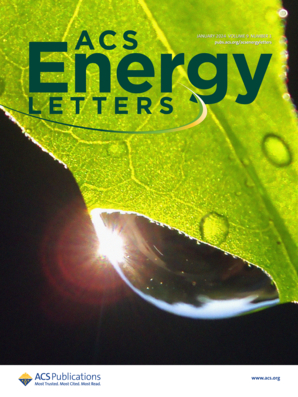Two-Step Graphene Strategy Enabling Long-Cycle Stability of Silicon Anodes
IF 19.3
1区 材料科学
Q1 CHEMISTRY, PHYSICAL
引用次数: 0
Abstract
A two-step graphene-reinforced hierarchical structure to address the poor cycle stability due to significant volume fluctuations in silicon anodes for lithium-ion batteries (LIBs) is introduced in this study. Fine composite granules (1–2 μm), SiNPs@rGO where silicon nanoparticles (SiNPs) were fully encapsulated by reduced graphene oxide (rGO) flakes, were synthesized by a high-power planetary ball milling technique. The compact structure of the SiNPs@rGO granules effectively suppressed the dispersion loss of Si and LixSi fragments from the granules. To accommodate the large volume fluctuation of Si in lithiation and delithiation cycles, a hierarchical structure using mechanically flexible and stretchable holey reduced graphene oxide (HrGO) 2D layers was developed. The hierarchical structure of HrGO/SiNPs@rGO composite anode successfully accommodated the volume fluctuations of SiNPs@rGO, thereby markedly enhancing long-cycle stability. Systematic analyses of the characteristic electrochemical properties and morphological evolution of these 2D material-based anodes are reported.

实现硅阳极长周期稳定性的两步石墨烯策略
本研究介绍了一种两步石墨烯增强分层结构,以解决锂离子电池(lib)硅阳极因体积波动而导致的循环稳定性差的问题。采用高功率行星球磨技术合成了硅纳米颗粒(SiNPs) (1 ~ 2 μm) (SiNPs@rGO),其中硅纳米颗粒(SiNPs)被还原氧化石墨烯(rGO)薄片完全包裹。SiNPs@rGO颗粒的致密结构有效地抑制了Si和LixSi碎片从颗粒中的分散损失。为了适应锂化和减薄循环中硅的大体积波动,开发了一种使用机械柔性和可拉伸的多孔还原氧化石墨烯(HrGO) 2D层的分层结构。HrGO/SiNPs@rGO复合阳极的层次化结构成功地适应了SiNPs@rGO的体积波动,从而显著提高了长周期稳定性。系统地分析了这些二维材料基阳极的电化学特性和形态演变。
本文章由计算机程序翻译,如有差异,请以英文原文为准。
求助全文
约1分钟内获得全文
求助全文
来源期刊

ACS Energy Letters
Energy-Renewable Energy, Sustainability and the Environment
CiteScore
31.20
自引率
5.00%
发文量
469
审稿时长
1 months
期刊介绍:
ACS Energy Letters is a monthly journal that publishes papers reporting new scientific advances in energy research. The journal focuses on topics that are of interest to scientists working in the fundamental and applied sciences. Rapid publication is a central criterion for acceptance, and the journal is known for its quick publication times, with an average of 4-6 weeks from submission to web publication in As Soon As Publishable format.
ACS Energy Letters is ranked as the number one journal in the Web of Science Electrochemistry category. It also ranks within the top 10 journals for Physical Chemistry, Energy & Fuels, and Nanoscience & Nanotechnology.
The journal offers several types of articles, including Letters, Energy Express, Perspectives, Reviews, Editorials, Viewpoints and Energy Focus. Additionally, authors have the option to submit videos that summarize or support the information presented in a Perspective or Review article, which can be highlighted on the journal's website. ACS Energy Letters is abstracted and indexed in Chemical Abstracts Service/SciFinder, EBSCO-summon, PubMed, Web of Science, Scopus and Portico.
 求助内容:
求助内容: 应助结果提醒方式:
应助结果提醒方式:


